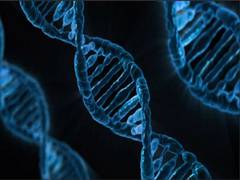
Washington [US], June 8 (ANI): Researchers have identified a gene that plays a minor role in congenital heart disease, using a combined approach that could aid studies of this and other multigenic diseases.
This new insight on the link between a gene called SORBS2 and congenital heart disease has been published in eLife, with findings that may help explain the cause of the disease in some patients.
Some people with congenital heart disease are missing part of the long arm of chromosome 4, otherwise known as chromosome 4q. Chromosomes are thread-like structures made up of DNA. When part of the chromosome is missing, it means that some of the genes located in that section are also lost.
Previous studies have linked heart defects related to chromosome 4q deletion syndrome to a missing copy of the HAND2 gene that is found in chromosome 4 and is important for heart development. But not every patient with a heart defect is missing HAND2, which suggests other genes are likely involved as well.
“A previous study of one patient with congenital heart disease suggested mutations in a gene called SORBS2 might be responsible, but this finding had yet to be confirmed,” explains first author Fei Liang, a physician at the Neonatal Intensive Care Unit, Shanghai Children’s Medical Center, China.
To explore the potential role of SORBS2 in congenital heart disease, Liang and colleagues suppressed the gene in developing human heart cells grown in the laboratory. This led to the development of abnormally shaped heart cells and interfered with the ability of cardiac muscle cells to undergo necessary changes in gene expression.
The team’s additional studies in genetically engineered mice showed that a lack of SORBS2 led to the absence or duplication of the wall between the two upper chambers of the heart in 40 per cent of embryos. This duplication is a condition known as the double atrial septum. However, the effect was much milder in comparison to human heart defects, suggesting that SORBS2 may be a ‘small effect size’ congenital heart disease gene – that is to say, it plays a minor role in the disease.
The team further examined how a lack of SORBS2 can affect gene expression in both mice and human cells. Their results highlighted how the levels of other genes and proteins are elevated or reduced in response to the lack of SORBS2, ultimately leading to heart defects and damage.
Finally, they found that rare, damaging variants of the SORBS2 gene were significantly enriched in 300 congenital heart disease cases where gross chromosomal aberrations did not occur. This provides additional genetic evidence that SORBS2 variants have a role in causing general congenital heart disease.
“Our combined studies help explain the cause of congenital heart disease in chromosome 4q deletion syndrome patients who still have the functional HAND2 gene,” concluded senior author Zhen Zhang, a professor at Shanghai Pediatric Congenital Heart Disease Institute and Pediatric Translational Medicine Institute, Shanghai Children’s Medical Center.
“They provide an effective approach for identifying other genes that play a minor role in congenital heart disease and other multigenic diseases. Interestingly, we found that SORBS2 deficiency can cause double atrial septum, a very rare cardiac anomaly linked to a condition called paradoxical thromboembolism. The exact causes of this anomaly are currently unknown, and we hope our study paves the way for exploring this further,” concluded Zhen. (ANI)



















